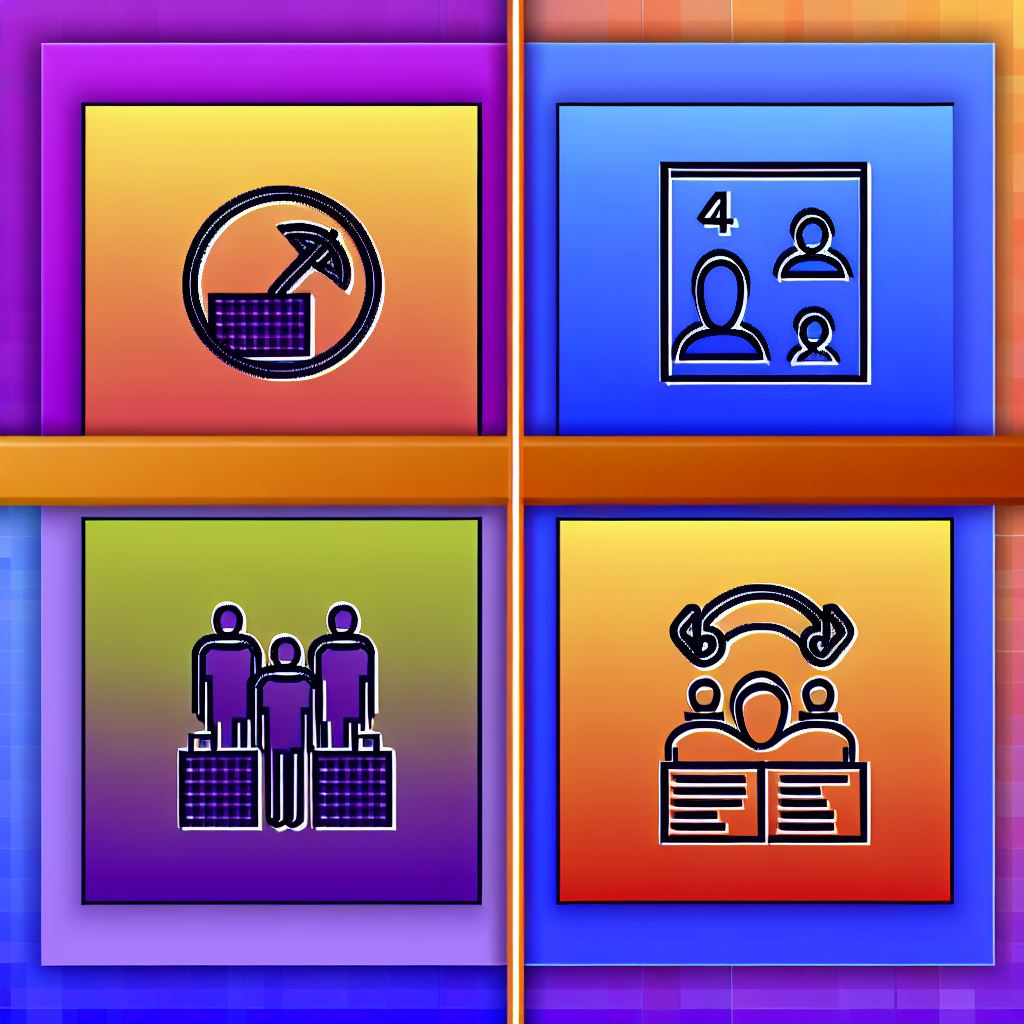
In today’s constantly evolving workplace environment, discrimination remains a significant challenge that human resource professionals face. Not only does it impact employee morale, but it can also influence overall productivity and the company’s reputation. Understanding the different types of discrimination that can arise in the workplace is vital for creating a truly inclusive environment. This article delves into the four primary types of discrimination, offering insights into their implications, current trends, and the advantages of effectively addressing these issues.
Understanding the Four Types of Discrimination
Discrimination can often manifest in various forms. To foster a fair workplace, it’s essential to recognise the four main categories of discrimination: direct discrimination, indirect discrimination, harassment, and victimisation. Each type carries its implications and requires specific strategies to manage and mitigate its impact effectively.
1. Direct Discrimination
Definition: Direct discrimination occurs when an individual is treated less favourably due to a protected characteristic such as race, gender, age, or religion. This form of discrimination is overt and often intentional.
Significance: The implications of direct discrimination are profound. Such actions can create a hostile workplace culture and discourage diverse talent from applying or remaining within an organisation. An example would be a qualified candidate being overlooked for a promotion strictly based on their ethnicity.
Current Trends: With advancements in technology, direct discrimination can also be associated with algorithmic bias in hiring processes. As more organisations rely on automated systems for recruitment, understanding how these systems may unintentionally favour certain demographics is critical.
Key Benefits: By addressing direct discrimination through clear policies and regular diversity training, organisations can foster a culture of equality and respect. Implementing comprehensive diversity, equity, and inclusion (DEI) training is crucial for educating employees about the impact of direct discriminatory behaviours.
2. Indirect Discrimination
Definition: Indirect discrimination occurs when a seemingly neutral policy or practice disproportionately disadvantages individuals with protected characteristics. For example, a uniform policy that fails to accommodate religious attire may inadvertently discriminate against individuals who wear such garments.
Significance: While indirect discrimination may not be intentional, its effects can be equally harmful. Policies that unintentionally marginalise certain groups can contribute to a negative workplace atmosphere and can severely hinder the organisation’s commitment to inclusivity.
Current Trends: In recent years, organisations have become more aware of unconscious bias. As a result, many companies are reviewing their operational policies to eliminate elements that could lead to indirect discrimination. Flexibility in policies, such as allowing remote work or flexible hours, is increasingly being implemented to address these issues.
Key Benefits: Regular audits and feedback mechanisms are essential for identifying potential indirect discrimination in practices. Engaging with employees to understand their needs can lead to a more supportive work environment.
3. Harassment
Definition: Harassment involves unwanted behaviour that violates an individual’s dignity or creates an intimidating, hostile, or offensive work environment. This can manifest as verbal abuse, inappropriate jokes, or other offensive behaviours targeted at an individual based on protected characteristics.
Significance: The impacts of harassment are far-reaching. It not only affects an individual’s mental health and job performance but can also create a toxic work culture that stifles collaboration and innovation.
Current Trends: The #MeToo movement has significantly raised awareness about workplace harassment. Following this, numerous organisations are adopting stringent zero-tolerance policies and establishing training programmes aimed at fostering respectful conduct among employees.
Key Benefits: Addressing harassment effectively requires a commitment to creating a safe and respectful workplace culture. Implementing clear reporting mechanisms and ensuring regular training can empower employees to speak up and foster a supportive workplace.
4. Victimisation
Definition: Victimisation occurs when an individual is treated unfavourably for having made a complaint regarding discrimination or harassment. This can manifest as retaliation against an employee who raises concerns about discriminatory practices.
Significance: Victimisation significantly deters individuals from reporting discriminatory behaviours, thereby maintaining a cycle of silence that can harm the entire organisation. It is crucial to create an environment where employees feel safe and supported when voicing their concerns.
Current Trends: Many organisations now focus on protecting whistle-blowers and ensuring that employees who report issues of discrimination do so without fear of reprisal. Increasingly, HR departments are prioritising this protective aspect as part of their diversity initiatives.
Key Benefits: Implementing clear anti-victimisation policies and ensuring complaints are handled with utmost confidentiality encourages a culture of openness and accountability. This transparency can lead to broader organisational improvements and employee satisfaction.
Conclusion
Comprehending and addressing the various forms of discrimination is vital for cultivating inclusive and equitable workplaces. Each type of discrimination demands unique strategies for detection and resolution, and organisations must remain vigilant in their efforts to eliminate these practices.
By championing diversity, equity, and inclusion initiatives, HR professionals can not only promote a sense of belonging among employees but also enhance the overall health and productivity of their organisations. Ongoing education, critical policy reviews, and a commitment to fostering a respectful environment will ensure that discrimination is actively addressed. Every employee deserves to work in a safe and supportive atmosphere, and it is the responsibility of HR departments to engender this culture within their organisations.
By tackling these discrimination forms head-on, you can play a key role in creating a workplace where all individuals are respected and valued. Embrace the challenge and champion the cause for an inclusive work environment.
For further reading and resources, you can refer to the following sources:
- Shouselaw: California Discrimination Laws – How to Bring a Lawsuit
- DavidsonMorris: Racial Discrimination at Work
- Diversity Social: Prejudice vs Discrimination vs Stereotype
- BYJU’S: Discrimination Meaning – An Overview
- Working Now and Then: What is Gender Discrimination?
Vadim Kouznetsov is a distinguished entrepreneur and the visionary founder and CEO of JobXDubai.com, the UAE’s rapidly expanding job board. Renowned for his expertise in bridging the gap between job seekers and employment opportunities, Vadim has become a leading authority in the recruitment and job market of Dubai.
